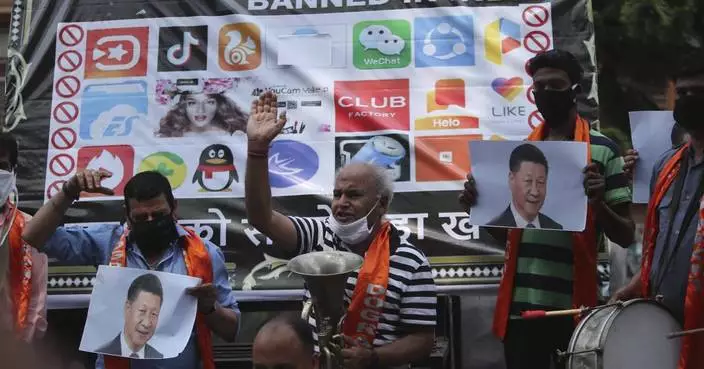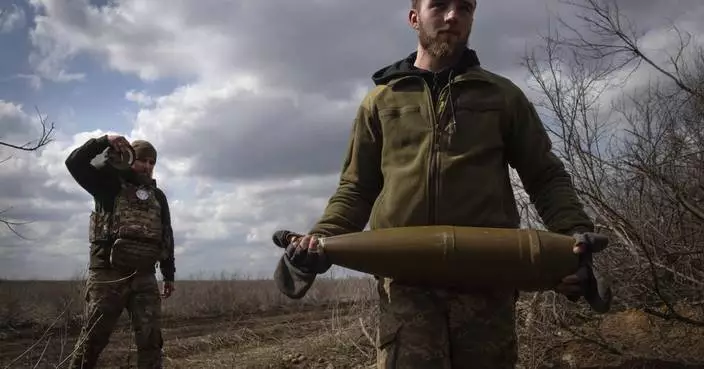Four days in Tokyo. Then it's off to see Queen Elizabeth before a jaunt to Normandy, France, and perhaps time in Ireland.
A return trip to Japan? Why not. And throw in Seoul. Then it's back to France for President Donald Trump for a summit with world leaders.
The homebody president is preparing for a jet-setting summer of travel as he heads into 2020, with an itinerary that will see Air Force One fly more than 36,000 miles — almost 1.5 times the earth's circumference — not counting helicopter trips and motorcades.

President Donald Trump walks to the Oval Office after arriving on Marine One on the South Lawn of the White House, Friday, May 17, 2019, in Washington. Trump is returning from a trip to New York. (AP PhotoAlex Brandon)
The flurry of international travel is a marked change of pace for a president who likes to sleep in his own bed and rarely strays far from the White House unless it's to his own properties. The packed calendar is the product of both a concerted attempt by Trump to wrap himself in the trappings of the presidency heading into re-election season and a fluke of the global summit calendar.
It will play out as an array of foreign challenges, from Venezuela to North Korea and Iran, confronts a president who ran on an isolationist "America First" platform.
"When things are hot in Washington, there's an appeal to going abroad, being diplomatic, meeting with overseas leaders" and redirecting media attention, said Julian Zelizer, a history professor at Princeton University. He said White Houses often hope the images beamed home from such trips will help presidents look more "presidential."
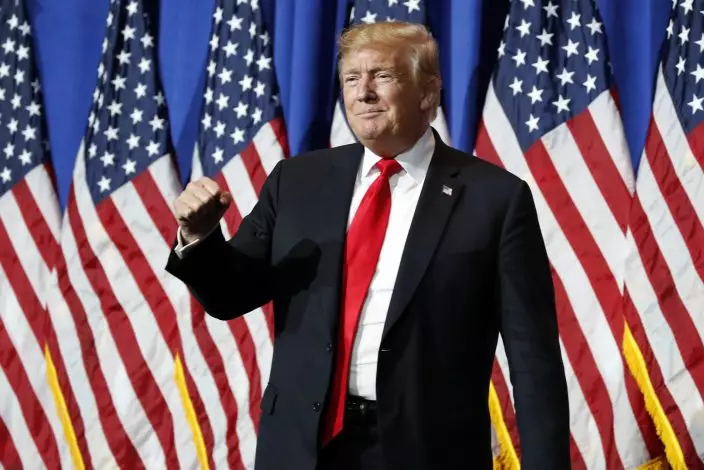
President Donald Trump arrives to speak at the National Association of REALTORS Legislative Meetings and Trade Expo, Friday, May 17, 2019, in Washington. (AP PhotoAlex Brandon)
A stream of television footage of Trump with foreign leaders "makes him look like he is the one directing the country, a contrast with the Democrats," Zelizer said.
Trump is set to depart Friday for a four-day state visit to Japan, where he will be the first world leader to meet with the country's new emperor. He plans to hold a joint news conference with Prime Minster Shinzo Abe and present a trophy at a sumo wrestling tournament.
Five days after he gets home, Trump is off for a state visit in the United Kingdom, where he'll mingle with the royal family and mark the 75th anniversary of D-Day with ceremonies in Portsmouth, England and Normandy.
He had been expected to return to Ireland, where he owns a golf course, but that stop was in question because of Prime Minister Leo Varadkar's concerns about meeting with the president at a Trump property rather than more neutral territory, according to Irish media. Deputy Prime Minister Simon Coveney said reports of the spat were "a total exaggeration" and he told Irish broadcaster RTE that details of the visit were still being finalized.
The end of June will see Trump in Japan a second time. Meetings with Chinese President Xi Jinping and Russian President Vladimir Putin are planned on the sidelines of the Group of 20 summit in Osaka, followed by consultations in Seoul with South Korean President Moon Jae-in on the state of North Korean nuclear negotiations.
Trump returns to France in late August for a Group of Seven summit in the seaside town of Biarritz on the Basque Country coast.
Trump is likely to be gone during at least one day of the inaugural Democratic presidential debates, scheduled to be held on back-to-back nights in late June owing to the sizable field of would-be Trump challengers. While his rivals are clamoring for the spotlight on stage, Trump will be abroad, welcomed by red carpets, honored with state dinners and engaging in policy discussions with presidents and prime ministers.
It's a split screen his campaign is eagerly awaiting.
"As they squabble in a field of two dozen socialists, President Trump is orchestrating the hottest economy on record, rectifying our trade relations across the globe, meeting with world leaders and pushing America First foreign policy," said campaign spokeswoman Kayleigh McEnany. "All of this while rallying with his supporters across the country. I'd say to the 2020 Democrats, good luck keeping up."
The trips also come as foreign policy is increasingly dominating Trump's agenda. His administration is promoting a change of government in Venezuela, Trump's friend Kim Jong Un is firing off missiles in North Korea, and tensions are growing between the U.S. and Iran. The U.S. is in an escalating trade war with China, with negotiations to find a solution at their lowest point in months.
While Trump's team believes the pageantry of global affairs offers an advantage to the incumbent, it also brings pitfalls. Trump has at times flouted diplomatic protocol and called into question the U.S. commitment to its alliances like no recent leader. That's a frequent line of attack from Democrats such as former Vice President Joe Biden, who has made returning to an internationalist foreign policy a centerpiece of his campaign.
Already, surveys show global affairs threaten to be a significant political liability for Trump heading into his 2020 re-election bid.
Overall, 63 percent of Americans disapproved of Trump's job handling foreign policy in a January poll conducted by The Associated Press-NORC Center for Public Affairs Research. Like other issues, the partisan divide was overwhelming: 76 percent of Republicans approved, while just 8 percent of Democrats said the same.
After a pair of whirlwind tours in 2017, Trump has lagged his predecessors in overseas travel and has skipped several world gatherings typically attended by American presidents, sending Vice President Mike Pence instead. Aides often note that Trump agrees to trips ahead of time then complains to them about the pace of travel once they're underway.
Nonetheless, Trump, like other presidents, has often tried to deploy the majesty of presidential travel for political gain, using Air Force One as a backdrop for campaign rallies and playing footage of his meetings with world leaders in tweeted videos.
But Ari Fleischer, White House press secretary under President George W. Bush, said he didn't think the visuals mattered much for Trump.
"I don't think it makes a lick of difference," he said. While past presidents may have been keen to show off their foreign policy know-how, forge alliances and convey strength, Fleischer said "this cycle is not like that" because Trump's appeal is driven so much by his personality.
Zelizer agreed, noting the unusual stability of Trump's approval and disapproval ratings.
For Trump haters, those emotions "will overshadow any handshakes," he said, while "for those who love him, I don't think that's why."
Follow Miller and Colvin on Twitter at https://twitter.com/ZekeJMiller and https://twitter.com/colvinj
KYIV, Ukraine (AP) — A big, new package of U.S. military aid will help Ukraine avoid defeat in its war with Russia. Winning will still be a long slog.
The arms and ammunition in the $61 billion military aid package should enable Ukraine to slow the Russian army's bloody advances and block its strikes on troops and civilians. And it will buy Ukraine time — for long-term planning about how to take back the fifth of the country now under Russian control.
“Ultimately it offers Ukraine the prospect of staying in the war this year,” said Michael Clarke, visiting professor in war studies at King’s College London. “Sometimes in warfare you’ve just got to stay in it. You’ve just got to avoid being rolled over.”
The U.S. House of Representatives approved the package on Saturday after months of delays by some Republicans wary of U.S. involvement overseas. It was passed by the Senate on Tuesday, and President Joe Bidensigned it into law on Wednesday.
The difference could be felt within days on the front line in eastern and southern Ukraine, where Russia’s much larger army has been slowly taking territory against massively outgunned Ukrainian forces.
The aid approval means Ukraine may be able to release artillery ammunition from dwindling stocks that it has been rationing. More equipment will come soon from American stocks in Poland and Germany, and later from the U.S.
The first shipments are expected to arrive by the beginning of next week, said Davyd Arakhamia, a lawmaker with Ukrainian President Volodymyr Zelenskyy’s Servant of the People party.
But opposition lawmaker Vadym Ivchenko, a member of the Ukrainian parliament’s National Security, Defense and Intelligence Committee, said logistical challenges and bureaucracy could delay shipments to Ukraine by two to three months, and it would be even longer before they reach the front line.
While details of the shipments are classified, Ukraine’s most urgent needs are artillery shells to stop Russian troops from advancing, and anti-aircraft missiles to protect people and infrastructure from missiles, drones and bombs.
What’s coming first is not always what front-line commanders need most, said Arakhamia, the Ukrainian lawmaker. He said that even a military giant like the U.S. does not have stockpiles of everything.
“The logic behind this first package was, you (the U.S.) finds our top priorities and then you see what you have in the warehouses,” Arakhamia said. “And sometimes they do not match.”
Hope for future breakthroughs for Ukraine still hangs on more timely deliveries of Western aid, lawmakers acknowledge.
Many experts believe that both Ukraine and Russia are exhausted by two years of war and won’t be able to mount a major offensive — one capable of making big strategic gains — until next year.
Still, Russia is pushing forward at several points along the 1,000-kilometer (600-mile) front, using tanks, wave after wave of infantry troops and satellite-guided gliding bombs to pummel Ukrainian forces. Russia is also hitting power plants and pounding Ukraine’s second-largest city, Kharkiv, which is only about 30 kilometers (some 20 miles) from the Russian border.
Ivchenko said the goal for Ukraine’s forces now is to “hold the line” until the bulk of new supplies arrive by mid-summer. Then, they can focus on trying to recapture territory recently lost in the Donetsk region.
“And probably ... at the end of summer we’ll see some movement, offensive movement of the Ukrainian armed forces,” he said.
Some military experts doubt Ukraine has the resources to mount even small offensives very soon.
The U.S. funding “can probably only help stabilize the Ukrainian position for this year and begin preparations for operations in 2025,” said Matthew Savill, director of military sciences at the Royal United Services Institute, a think tank.
In the best-case scenario for Ukraine, the American aid will give commanders time to reorganize and train its army — applying lessons learned from its failed summer 2023 offensive. It may also galvanize Ukraine’s allies in Europe to increase aid.
“So this just wasn’t about Ukraine and the United States, this really affected our entire 51-country coalition,” said U.S. Congressman Bill Keating, a Democrat who visited Kyiv on Monday as part of a four-member congressional delegation.
Zelenskyy insists Ukraine's war aim is to recapture all its territory from Russia — including Crimea, seized illegally in 2014. Even if the war ultimately ends through negotiation, as many experts believe, Ukraine wants to do that from as strong a position as possible.
Whatever happens on the battlefield, Ukraine still faces variables beyond its control.
Former U.S. President Donald Trump, who seeks to retake the White House in the November election, has said he would end the war within days of taking office. And the 27-nation Europe Union includes leaders like Hungarian Prime Minister Viktor Orbán and Slovak Prime Minister Robert Fico, who have opposed arming Ukraine.
Ukraine’s allies have held back from supplying some arms out of concern about escalation or depleting their own stocks. Ukraine says that to win the war it needs longer-range missiles it could use for potentially game-changing operations such as cutting off occupied Crimea, where's Russia's Black Sea fleet is based.
Ukraine especially wants a longer-range version of Army Tactical Missile Systems, known as ATACMS, from the U.S., along with Taurus cruise missiles from Germany. Both governments have resisted calls to send them because they are capable of striking targets deep within Russian territory.
The new bill authorizes Biden to send Ukraine ATACMS that have a range of some 300 kilometers (190 miles) “as soon as practicable.”
On Wednesday, American officials revealed that the U.S. already secretly transferred a number of the longer-range missiles to Ukraine last month, and they were used for the first time last week to strike an airfield in occupied Crimea. The officials spoke on condition of anonymity to discuss the delivery before it became public.
Meanwhile, Russia is using its advantage in troops and weapons to push back Ukrainian forces, perhaps seeking to make maximum gains before Ukraine's new supplies arrive.
For weeks it has pummeled the small eastern city of Chasiv Yar, suffering heavy losses. Britain's Ministry of Defense says 900 Russian troops are being killed or injured a day in the war.
Capturing the strategically important hill town would allow them to move toward Sloviansk and Kramatorsk, key cities Ukraine controls in the eastern region of Donetsk. It would be a significant win for Russian President Vladimir Putin, who Western officials say is bent on toppling Ukraine’s pro-Western government.
Russian pressure was aimed not just at gaining territory, but on undermining Zelenskyy and bolstering critics who say his war plan is failing, said Clarke of King's College London.
The U.S. aid package decreases the likelihood of a political crisis in Ukraine, and U.S. Speaker Mike Johnson deserves credit for pushing it through Congress, he said.
"He held history in his hands,” Clarke said.
This story has been updated to correct Orbán's title, the Slovak prime minister's name and that the British estimate of daily Russian losses is for the war, not one battle.
Associated Press writers Lolita C. Baldor and Tara Copp contributed from Washgington.
Follow AP’s coverage of the war in Ukraine at https://apnews.com/hub/russia-ukraine
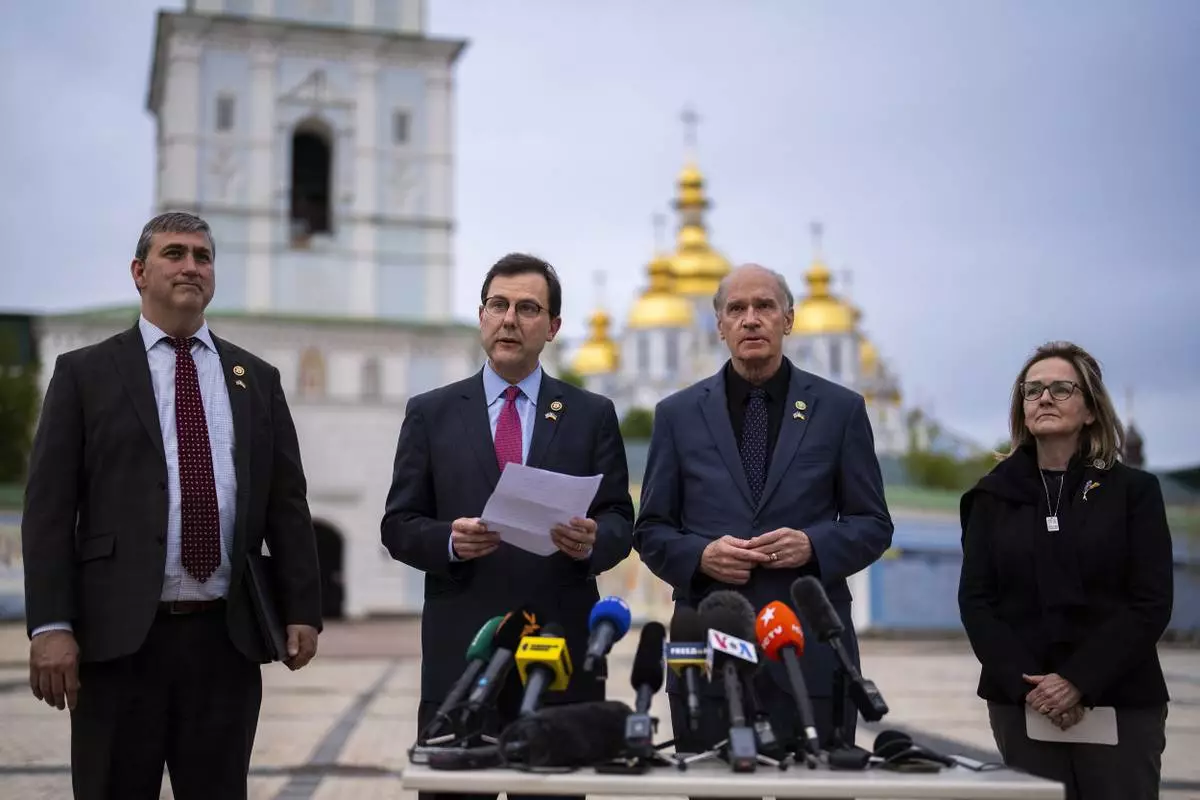
From left, U.S. representatives Nathaniel Moran, R-Tx, Tom Kean Jr, R-NJ, Bill Keating, D-Mass, and Madeleine Deane, D-Pa, talk to journalists during a joint news conference outside Saint Michael cathedral in Kyiv, Ukraine, Monday, April 22, 2024. A newly approved package of $61 billion in U.S. aid may prevent Ukraine from losing its war against Russia. But winning it will be a long slog. (AP Photo/Francisco Seco)
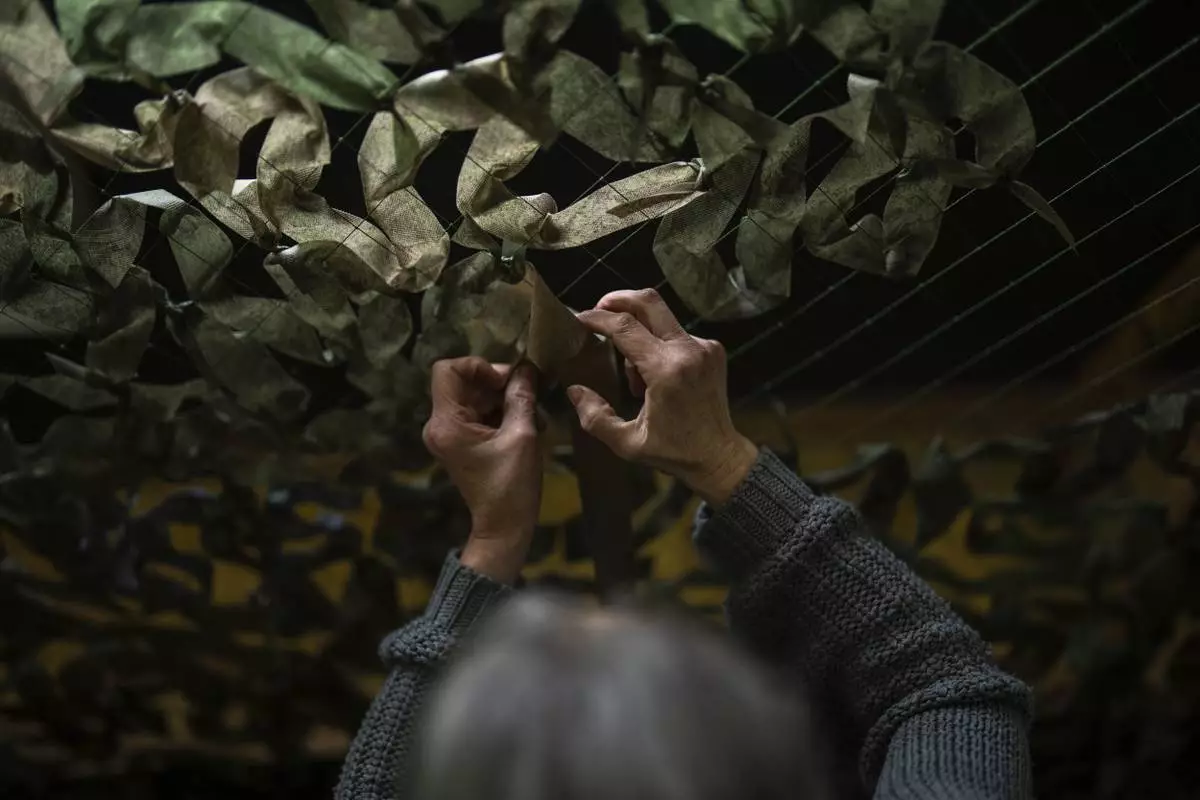
A volunteer makes a camouflage net at a facility producing material for Ukrainian soldiers in Kyiv, Ukraine, Monday, April 22, 2024. A newly approved package of $61 billion in U.S. aid may prevent Ukraine from losing its war against Russia. But winning it will be a long slog. (AP Photo/Francisco Seco)
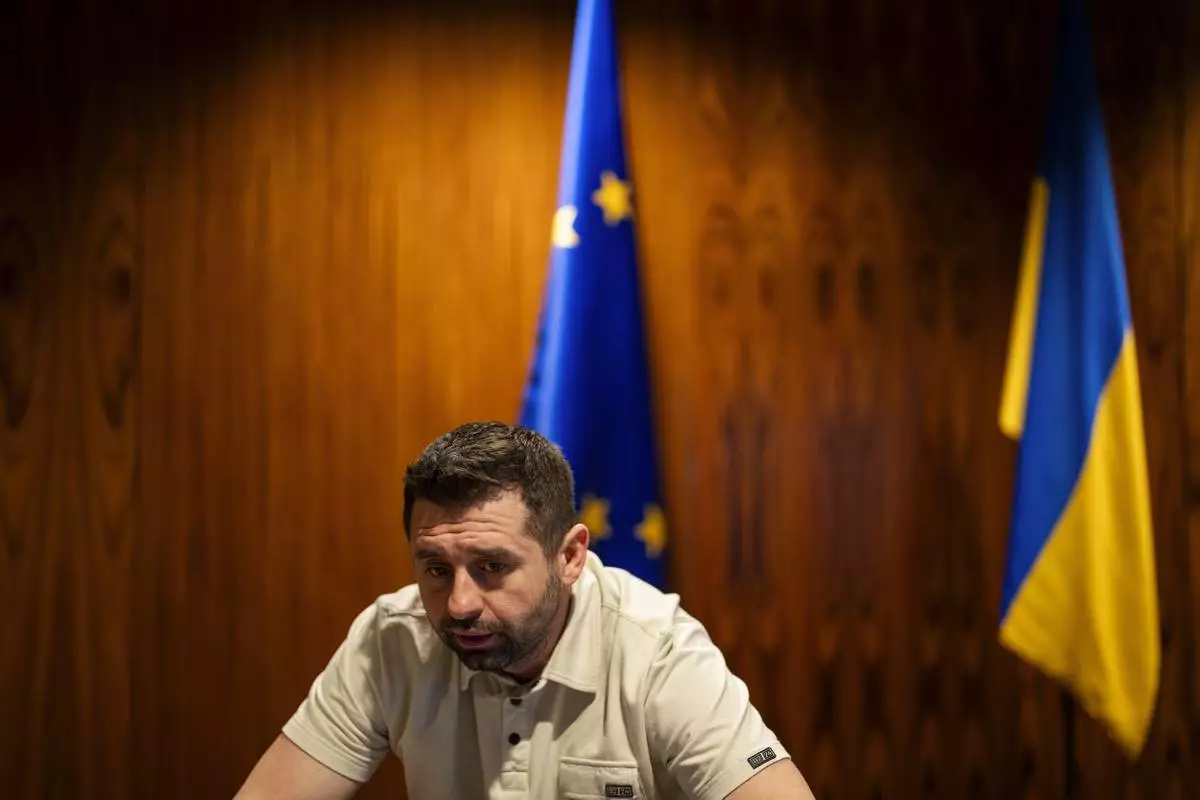
Davyd Arakhamia, a lawmaker with Ukrainian President Volodymyr Zelenskyy's Servant of the People party, talks during an interview with Associated Press in Kyiv, Ukraine, Monday, April 22, 2024. (AP Photo/Francisco Seco)

A woman rallies to raise awareness on the fate of Ukrainian prisoners of war in Kyiv, Ukraine, Sunday, April 21, 2024. (AP Photo/Francisco Seco)
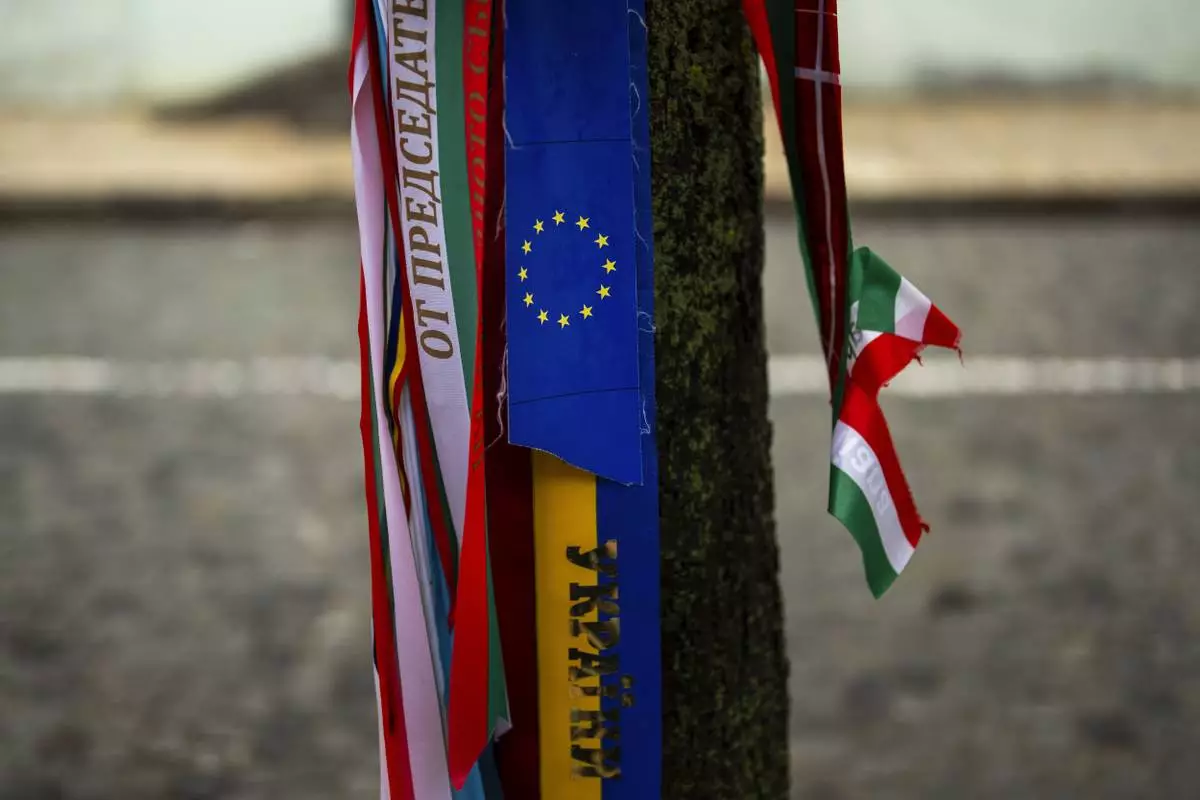
Ribbons with the colors of the European Union and Ukraine are attached to a tree next to memorial wall of Ukrainian soldiers killed during the war in Kyiv, Ukraine, Monday, April 22, 2024. (AP Photo/Francisco Seco)
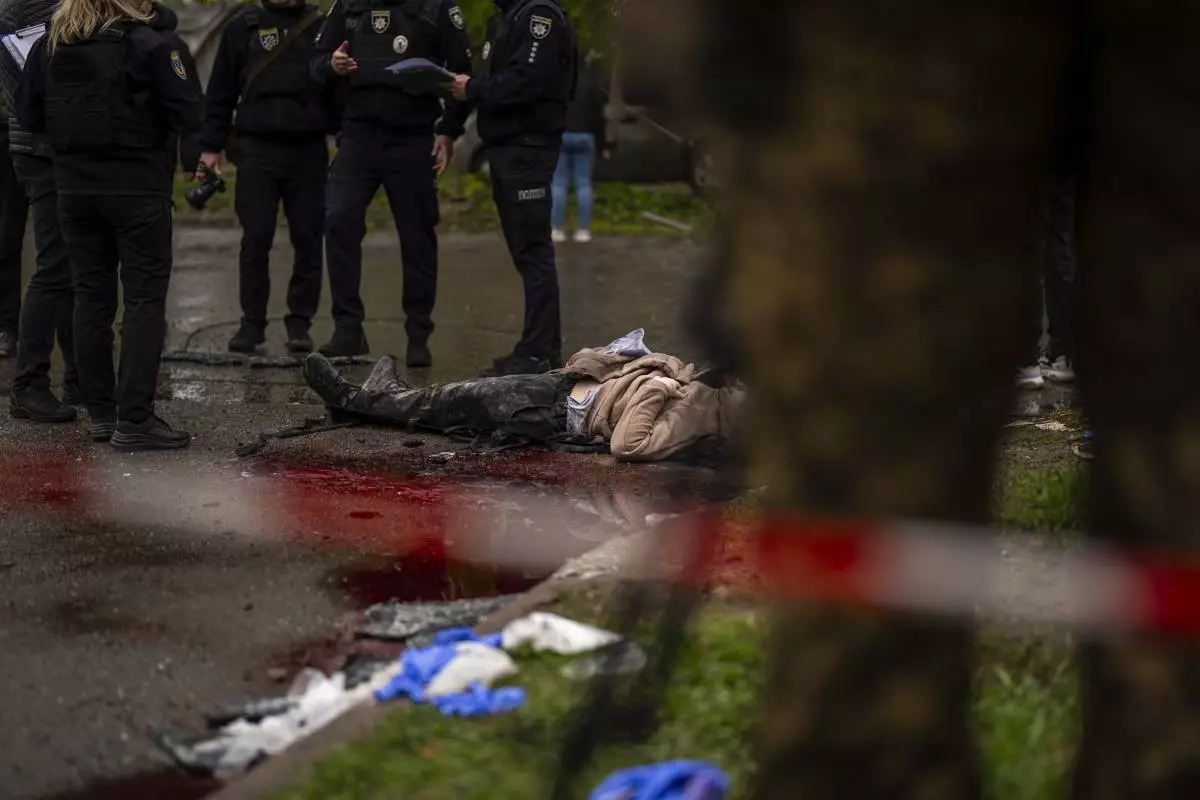
The body of a woman killed by Russian bombardment in Chernihiv, Ukraine, Wednesday, April 17, 2024. (AP Photo/Francisco Seco)

Soldiers carry the coffins of two Ukrainian army sergeants during their funeral in Lviv, Ukraine, Tuesday, April 16, 2024. (AP Photo/Francisco Seco)












